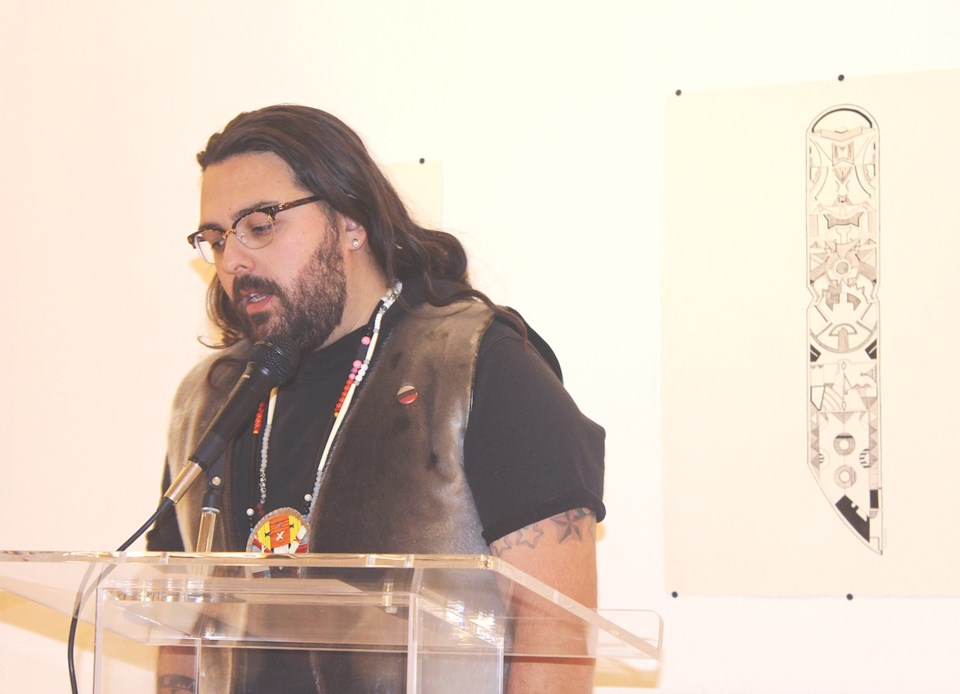Jordan Bennett’s exhibit at the Estevan Art Gallery and Museum’s (EAGM) gallery No. 1 conveys the stories and the symbols associated with his people.
An opening reception for Bennett’s work was held on Jan. 26 at the EAGM. He discussed his work and answered questions for the audience.
It will remain at the EAGM until early April.
Bennett, who is a visual artist of Mi'kmaq decent and a resident of the west coast of Newfoundland, said the show is based on observations of Mi’kmaq and Beothuk people and their visual cultures.
“A lot of these works are based on our traditional porcupine quill designs, so a lot of people come into the galleries when they have these shows, and they look at it, and they see the connections of the Indigenous influence, but also ask about the bright colours,” said Bennett.
These colours are traditional for the Mi’kmaq. Dating back 200 or 300 years, they used a lot of hot pink, bright orange and red.
Stories of the Mi’kmaq people are starting to surface now, he said, and the Wije’Wi (Come with Me) shares some of those stories.
“These stories were never actually passed on through written material, but through visual material,” said Bennett. “There’s a lot of text written about the Beothuk and the Mi’kmaq, from Jesuit priests from as early as 1499 and 1501, and a lot of these texts are very one-sided. So what I wanted to do was put those texts to the side.”
Bennett spent countless hours in museums and archives studying the work of the Beothuk and Mi’kmaq, to figure out the colour scheme and the connections with the artwork.
“And then I started to discover that the Mi’kmaq and Beothuk designs were very similar, so I started to overlap them and connect them, and make them converse with one another in different ways,” said Bennett.
Bennett started working on the exhibit while working on his master’s thesis in B.C. He connected with the late Daphne Odjig, who was 95 years old at the time and still completing a couple of drawings a day.
“I looked at her drawings, and I said ‘If you can do two a day, I can do one a week,’” said Bennett.
Two exhibits in the south corner of Gallery No. 1 have an audio component. If people spend enough time in front of the selections, they will start to hear sounds.
“The further you are from the piece, it sounds like kind of a static,” said Bennett. “The closer you get, it turns into a more audible and recognizable sound.”
There are also works that pay tribute to trees.
“You can tell so much about the rings of a tree, how old it is, if it was involved in any type of forest fire, if there was a bug, all these different seasons, how long the seasons were sometimes, so I started to think what kind of information could be stored in these pieces,” said Bennett.
At that point, Bennett and a friend realized many of the trees they saw in B.C. are much older than Canada.
All of the selections in the exhibit serve as stories of home, he said, and elements that are important about their culture.




